Team Games
Age: All ages
No. of players: Large groups
Equipment: Various; depends on the game.
Time: 10 minutes+
Aim: The aim varies from game to game.
Team Games are so much fun at picnics, family reunions and other get togethers. They can involve players of all ages, from young children to grandparents. Just try to make sure the teams are fairly even! Try these team games:
- Balloon Volleyball
Crab Scuttle Relay
Rounders
Square Chasing
Tunnel Ball
Under and Over
Captain Ball
Tug of War
Relay Races
Balloon Volleyball. This team game is best played on a windless day. Simply set up a rope or string (roughly 6 metres or 20 feet long) at head height as a "net". Each team has three hits to get the balloon over the net. The opposing team then hits the balloon back over before it touches the ground. A team which allows the balloon to touch the ground or which takes more than three hits gives the oppposing team one point. The first team to 21 points wins the game.
Crab Scuttle Relay is a team game that requires a larger area such as a field, with 4-8 players per team. Any amount of teams can compete but they must have equal numbers of players on each team. Two lines are marked about ten metres/yards apart. The teams line up behind one line. The first team member runs to the line and back to their team. They put their left hand between their legs and the second team member grabs it with their right hand. Both members then run together to the line and back, and so on, until finally the whole team is joined together and runs the course. The first team over the line wins.
Rounders is a team game similar to softball and baseball. It requires a softball/baseball bat and a tennis ball. A game of Rounders should have twenty players on two teams (ten players per team), but can be played with less as long as the teams are even. Five bases are marked in a pentagon about ten metres/yards apart. One base is the Home. The batting team sits near Home while the fielding team spreads out over the field. One fielder (known as the Feeder) throws the ball underarm to the Batter who attempts to hit the ball. If the Batter does not hit the ball in three attempts, they are out. If the batter hits the ball, they drop the bat and must run around the bases and back to Home. The fielders attempt to throw the ball and hit either the runner or the base they are running towards. If they do, or a fielder catches the ball that was hit before it touches the ground, the runner is out. If the runner makes it safely back to Home, they score one run for their team and can bat again after the rest of their team. (A player who is out cannot bat again.) When all the batting team are out, the teams swap sides. The team with the highest number of runs after both sides are out wins the game.
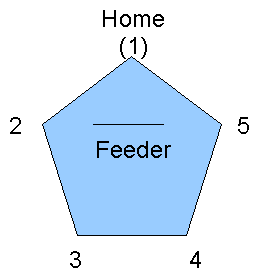
Square Chasing is a team game that suits younger children. It requires four even teams who line up along the four sides of a square. The corners of the square can be marked. Members of each team are given a number, so that one player on each team has the same number. For example, if there are 24 players (six per team), each team will have the numbers 1 to 6. An adult or older child calls out a number at random. The four players with that number run clockwise around the outside of the square. If the caller yells "Change!", the runners must reverse direction. When one player gets tagged by another player, they all return to their teams and another number is called out. The team with the most tags wins the game.
Tunnel ball needs one soccer ball or basketball for each team of 6-10 players. Players line up behind each other, facing one direction, with their feet spread apart to form a "tunnel". The first player in the team pushes the ball between their legs and attempts to get the ball all the way through the tunnel. Other players can help the ball through, as long as they don't move their feet. If the ball goes out the side of the tunnel it must return to the front of the line. When the ball gets all the way through the tunnel, the last player picks it up and runs to the front of the line. The game continues until the original player makes it to the front of the team again. The first team to achieve this wins the game.
Under and Over is a team game similar to Tunnel Ball except that the ball is passed over the head of the first player, under the legs of the second player and so on, alternating down the line. The first team to go through all their player wins the game.
Captain Ball is also similar to Tunnel Ball except the front player (the Captain) faces the rest of their team. The Captain throws the ball to the first player of their team, who catches it and throws it back before squatting down. The Captain then throws the ball to the second player, and so on. The final player of the team catches the ball and runs to the front of the team to become the new Captain while the old Captain becomes the first catcher and the rest of the team stands up. Again, the first team to go through all their player wins the game.
Tug of War. This has been a favourite picnic game for generations of families and requires a solid thick rope about 20 metres/yards long. Three equally spaced lines are marked on the ground about one metre/yard apart. Two teams of equal size and strength line up facing each other along opposite ends of the rope, which has a handkerchief (or similar) tied in the centre. The teams pick up the rope and take up the strain by pulling gently in opposite directions. A judge makes sure the rope starts with the handkerchief over the middle line and then yells, "Pull!" Both teams pull as hard as they can. The first team to pull the rope so that the handkerchief passes over the line closest to their team wins.
Relay races. You can make a team game by awarding points to the winning team of each relay race. Try some of these variations to the standard sprint relays.
- * Competitors must complete the course by running backwards
* Ankle relay (where competitors must run while holding their ankles)
* Teams must do forward rolls/somersaults
* Crawling on hands and knees
* Three legged relay (with two members of the team tied together at their ankles by a stocking or similar soft material)
* Skipping relays (with or without a skipping rope)
* Dribbling a soccer ball
* Wheelbarrow relay (where one player grasps the ankles of another player who must "run" the course on their hands while their feet are supported in the air)
* Sack relay (where players must jump the course while their legs are in a sack held up to their waist. NOTE: Take care with plastic sacks since they may be very slippery)
* Piggy Back Relay (One player must carry another player from their team on their back while they run)
* Leap Frog Relay (Two players leapfrog over each other along the course)
* Sedan Chairs (where two players link their arms to carry a third member of their team)
* Balloon Sweep (Teams use a broom to push a balloon)
* Balloon Burst (Competitors must blow up and burst a balloon before they can run the course - just watch out for fainting!)
* Egg and Spoon relay (competitors use a teaspoon to carry a hard boiled egg along the course and must pass the egg to the next competitor without touching it. For more fun, you could use raw eggs if you don't mind cleaning up the mess!)
Link from our Team Games page to our Home page
Sitemap
Thank you for visiting our website!
Parlor Games | Board Games | Traveling Games | Tile (Domino) Games
Card Games | Worldwide Games | Outdoor Games | Dice Games | Word Games
Christmas Games | Easter Games | Thanksgiving Games
Family Reunion Games | Valentines Games
Great Gift Ideas
 Cashflow |
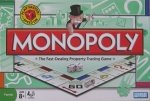 Monopoly |
 Family Trampoline |
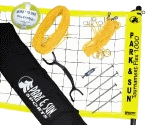 Volleyball Set |
 Table Tennis Table |
Ebooks
 The Family Guide to Party Games |
 The Family Guide to Christmas Games (Volume 1) |
 The Family Guide to Christmas Games (Volume 2) |
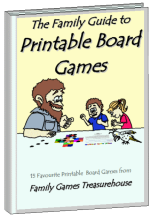 The Family Guide to Printable Board Games |
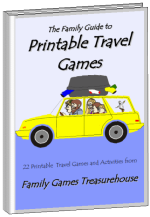 The Family Guide to Printable Travel Games |

